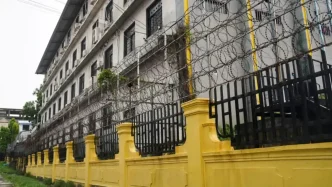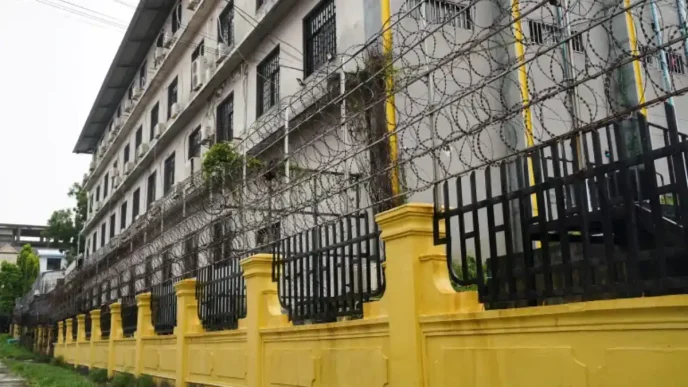A devastating collapse of a section of the newly retrofitted Cabagan-Sta. Maria Bridge in Isabela province has left a young boy critically injured and raised urgent questions about the integrity of public infrastructure projects in the Philippines. The incident, which occurred on the night of 27 February 2025, saw four vehicles, including a heavily loaded dump truck, plummet into a dry section of the Cagayan River bank below. Five others sustained minor injuries, but the broader damage may be to public trust in the government’s ability to deliver safe, reliable infrastructure.
The bridge, a key connection between the towns of Cabagan and Santa Maria in Isabela, was heralded as a flagship project under the Duterte administration’s “Build, Build, Build” initiative. Yet, less than a month after retrofitting work was completed on 1 February, the third span of the 900-metre, nine-span structure gave way under the weight of a truck carrying 102 tonnes of boulders—more than double the bridge’s stated capacity of 45 tonnes. While the driver’s decision to cross with an overloaded vehicle has drawn scrutiny, the collapse has ignited a firestorm of allegations regarding corruption, substandard materials, and inadequate oversight by the Department of Public Works and Highways (DPWH).
A Costly Failure
The Cabagan-Sta. Maria Bridge was initially slated for completion in 2019 at a cost of P639 million (approximately £9 million). However, a third-party audit revealed critical design flaws, deeming the original structure unsuitable for its intended length and load capacity. This necessitated an additional P274.8 million in retrofitting, pushing the total cost to P1.22 billion and delaying completion until 2021. For many Filipinos, the bridge became a symbol of ambition—but its collapse has transformed it into a stark reminder of systemic issues plaguing infrastructure development.
The DPWH has launched an investigation, with experts from its Bureau of Design and Bureau of Construction tasked with assessing the cause of the collapse. Engineer Mathias Malenab, officer in charge of DPWH Cagayan Valley, has denied claims of substandard materials, insisting that the bridge met all standards and specifications. However, his assurances have done little to quell public outrage, as long-standing perceptions of corruption within the DPWH fuel speculation about shoddy workmanship, inadequate inspections, and possible collusion with contractors.
Political Fallout and Calls for Accountability
The collapse has reverberated through the halls of power in Manila, prompting swift responses from political leaders across the spectrum. The Marcos administration has vowed to uncover any wrongdoing, with Palace Press Office spokesperson Claire Castro stating, “If there is any trace of corruption in what happened from 2014 until now, those responsible must be held accountable and face consequences, including imprisonment.” This commitment to justice, while welcomed by many, comes against a backdrop of public scepticism about whether such promises will translate into meaningful action.
In the House of Representatives, Deputy Minority Leader and ACT Teachers Representative France Castro has called for a congressional inquiry to probe the incident. “It’s alarming that a P1.22 billion bridge, just retrofitted on 1 February, has already collapsed. This is not just a simple accident or mere negligence. We need to examine the possibility of corruption and substandard materials,” she said. Her concerns echo a growing sentiment among Filipinos that infrastructure failures often stem from deeper, systemic issues rather than isolated errors.
At the Senate, Minority Leader Koko Pimentel has filed a resolution for an inquiry into the Isabela bridge collapse and similar incidents, describing the frequency of such failures as having “reached an alarming level.” Senator Ramon Revilla Jr., chair of the Senate Committee on Public Works, went further, declaring that “heads must roll” and advocating for the contractor to be blacklisted and compelled to repair the bridge at no additional cost to taxpayers.
Former Senator Panfilo Lacson, a vocal critic of infrastructure mismanagement, also weighed in, questioning the very purpose of a bridge that cannot withstand the loads it was designed to carry. “What is the purpose of a bridge if trucks can’t pass through it? Maybe the materials were substandard. Until someone is held accountable and jailed, this won’t stop,” Lacson said. His warning—that such failures will recur unless culprits face severe consequences—resonates with a public weary of repeated infrastructure debacles.
Systemic Issues in Infrastructure Development
The collapse of the Cabagan-Sta. Maria Bridge is not an isolated incident but rather a symptom of broader challenges in the Philippines’ infrastructure sector. The DPWH, tasked with overseeing major public works projects, has long been dogged by allegations of corruption and inefficiency. Critics argue that the agency’s processes—from project design to contractor selection and post-construction maintenance—lack the rigour needed to ensure safety and durability. The Isabela bridge, with its history of design flaws and cost overruns, exemplifies these shortcomings.
If allegations of substandard materials or inadequate oversight are confirmed, the incident could further erode public confidence in the government’s ability to deliver on its infrastructure promises. The “Build, Build, Build” programme, while ambitious, has faced criticism for prioritising speed and visibility over quality and accountability. For rural communities like those in Isabela, who rely on such projects for economic connectivity, the stakes are particularly high. A bridge is more than just a structure; it is a lifeline for trade, transport, and access to services.
Moreover, the human cost of infrastructure failures cannot be overlooked. The young boy critically injured in the collapse, alongside the five others hurt, serves as a tragic reminder of what is at risk when projects fail. While the driver of the overloaded truck bears responsibility for exceeding weight limits, the question remains: why was a newly retrofitted bridge unable to withstand such a load, even if excessive? If design or material flaws are found to have contributed, the burden of accountability must extend beyond a single individual to those who approved and executed the project.
A Wake-Up Call for Reform
The Isabela bridge collapse must serve as a wake-up call for the DPWH and the broader government to prioritise safety and transparency in infrastructure development. Rigorous supervision—from the initial design phase to contractor performance and ongoing maintenance—is essential to prevent similar tragedies. While the Marcos administration’s pledge to hold wrongdoers accountable is a step in the right direction, it must be backed by concrete reforms to address systemic corruption and incompetence.
For now, the people of Isabela are left to grapple with the immediate consequences of the collapse. The bridge, which was yet to be formally inaugurated, remains a broken promise—a stark contrast to the optimism it once inspired. As investigations unfold, Filipinos across the country will be watching closely, hoping for answers and, more importantly, for assurances that their lives and livelihoods will not be jeopardised by the failures of those entrusted to build their future.
The path forward is clear: accountability must be enforced, standards must be upheld, and public trust must be rebuilt. Without these, the collapse of the Cabagan-Sta. Maria Bridge will not be the last disaster to strike. If reforms are implemented and lessons are learned, however, this tragic incident could mark a turning point in how the Philippines approaches its infrastructure ambitions. For the sake of the injured boy and countless others who depend on safe public works, that turning point cannot come soon enough.














